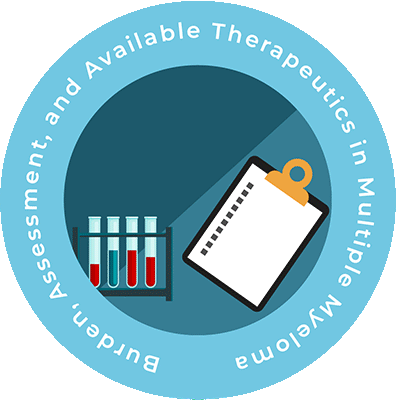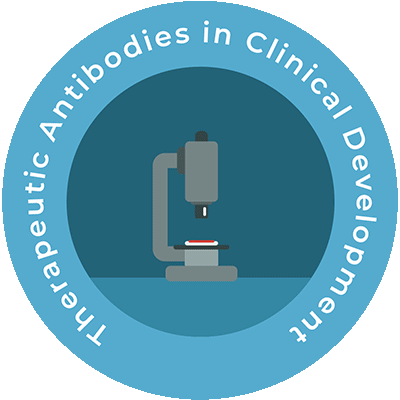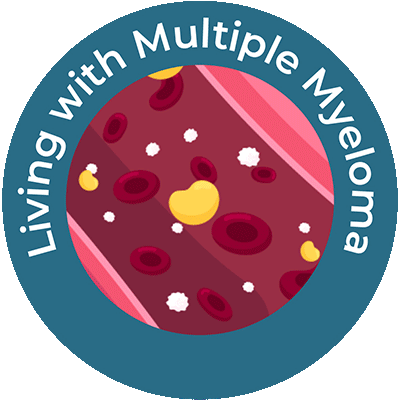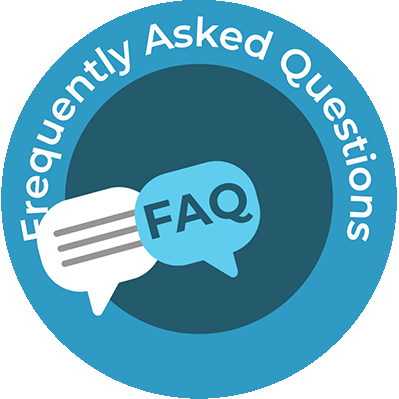This activity is provided by Med Learning Group.
This activity is supported by an independent medical education grant from Regeneron Pharmaceuticals, Inc.
Copyright © 2024 Med Learning Group. Built by Divigner. All Rights Reserved.
Burden, Assessment, and Available Therapeutics in Multiple Myeloma
Multiple myeloma is a plasma cell malignancy in which B cells responsible for active immunity form antibodies that damage the kidneys, bone, and other organ systems.1 Each year, more than 34,000 patients are diagnosed with multiple myeloma and results in more than 12,000 deaths annually.2 As part of the process of diagnosis, assessment of cytogenetic abnormalities and disease staging are important, as these play a significant role in choosing optimal therapeutic pathways. Two such important staging systems are the International Staging System (ISS) and the Revised International Staging System (R-ISS) (Table 1).1,3
Table 1: ISS Staging Systems in Multiple Myeloma1
Stage | International Staging System (ISS) | Revised-ISS (R-ISS) |
I | Serum beta-2 microglobulin (Sβ2M) <3.5 mg/L, serum albumin ≥3.5 g/dL | ISS stage I and standard risk chromosomal abnormalities by FISH and Serum LDH ≤ the upper limit of normal |
II | Sβ2M < 3.5 mg/L; serum albumin < 3.5 g/dL; or β2M 3.5 to 5.5 mg/L, irrespective of serum albumin | Not R-ISS stage I or III |
III | Sβ2M ≥5.5 mg/L | ISS stage III and either high-risk chromosomal abnormalities by FISH or Serum LDH > the upper limit of normal |
FISH, fluorescence in situ hybridization; LDH, lactate dehydrogenase.
Although highly effective treatments are available in early-line settings of multiple myeloma management, such as proteasome inhibitors, immunomodulatory drugs (IMiDs), corticosteroids, and 4-drug combinations—including anti-CD38 antibodies, there remain major gaps in later-line management of multiple myeloma [NCCN 2022]. Available therapies for the management of relapsed/refractory multiple myeloma include many of the combinations used in earlier-line settings following treatment-free intervals, such as proteasome inhibitors and IMiDs, although multiple other therapies are available. These include exportin-1 (XPO1) inhibitors, pan-deacetylase inhibitors, the signaling lymphocyte activation molecular family 7 (SLAMF7) antibodies, anti-CD27 antibodies, B-cell maturation antigen (BCMA)-targeted antibody-drug conjugates, and chimeric antigen receptor T-cell (CAR-T) therapies.1,4-6
- Anti-CD38 antibodies: Combined therapy with the anti-CD38 antibody daratumumab, along with lenalidomide, and dexamethasone prolonged progression-free survival in patients relapsed/refractory multiple myeloma in the CASTOR and POLLUX clinical trials.7,8 In the MAIA trial for transplant-ineligible patients with newly diagnosed multiple myeloma, median progression-free survival was not reached in patients in either the daratumumab or control groups. The primary analysis at a median follow-up of 28.0 months, however, showed significantly improved progression-free survival with triple therapy, supporting frontline use of daratumumab plus lenalidomide and dexamethasone versus lenalidomide and dexamethasone therapy without daratumumab. Other secondary endpoints favoring triple therapy included prolonged duration of therapy (47.5 vs 22.6 months) and delay to next-line therapy.9 Additionally, the anti-CD38 antibody isatuximab along with pomalidomide and dexamethasone improved depth of response in the ICARIA-MM study.10 In clinical studies, thrombocytopenia is among the most common grade 3 or 4 adverse events resulting from therapy.
- XPO-1 inhibitors: The exportin-1 inhibitor selinexor was evaluated in the phase 3 BOSTON study of selinexor, bortezomib, and dexamethasone therapy administered once weekly versus twice weekly doublet therapy with bortezomib and dexamethasone. Median progression-free survival was significantly extended (13.93 months vs 9.46 months; HR 0.70 [95% CI 0.53–0.93], P= .0075) in patients with multiple myeloma previously treated with one to three prior lines of therapy. Adverse events of grade 3 or 4 severity included thrombocytopenia, fatigue, anemia, and pneumonia.11
- SLAMF7 antibodies: Elotuzumab is an anti-signaling lymphocytic activation molecule F7 (SLAMF7) antibody. In the phase 3 ELOQUENT-2 clinical trial in patients who had previously received one to three prior lines of therapy, progression-free survival diverged between groups favored elotuzumab at 1 year (68% vs 57%), and 2 years (41% vs 27%). Overall response rates were also significantly increased (79% vs 66%; P< .001). Common grade 3 or 4 adverse events included lymphocytopenia, neutropenia, fatigue, and pneumonia.12
- Anti-BCMA antibody-drug conjugates (ADCs): Anti-BCMA therapies are a relatively recent addition to the therapeutic armamentarium in multiple myeloma management. Importantly, BCMA expression is high on plasma cells, and maintains proliferation, survival, and differentiation of B cells.13 In the phase 2 DREAMM-2 study evaluating the BCMA-targeting antibody-drug conjugate belantamab mafodotin, 31%; (97.5% CI 20.8–42.6) of patients in the 2.5 mg/kg cohort and 34% (23.9–46.0) of patients in the 3.4 mg/kg cohort achieved overall response.14
- CAR-T therapy: Two chimeric antigen receptor therapies are available for the management of multiple myeloma, including idecabtagene vicleucel and ciltacabtagene autoleucel. In a study of 140 patients with relapsed and refractory myeloma, 128 received the B-cell maturation antigen-directed CAR T-cell therapy idecabtagene vicleucel. The primary endpoint was an overall response (partial response or better), with a key secondary endpoint of complete response or better (comprising complete and stringent complete responses). At a median follow-up of 13.3 months, 94 of 128 patients (73%) had a response, and 42 of 128 (33%) had a complete response or better. Almost all patients had grade 3 or 4 toxic effects, most commonly hematologic toxic effects and cytokine release syndrome. These findings led to FDA approval of idecabtagene vicleucel for the treatment of adult patients with relapsed or refractory multiple myeloma after four or more prior lines of therapy, including an immunomodulatory agent, a proteasome inhibitor, and an anti-CD38 monoclonal antibody.15,16 The CARTITUDE-1 study of ciltacabtagene autoleucel evaluated the safety and efficacy of CAR T-cell therapy in patients with relapsed or refractory multiple myeloma. The primary endpoint was overall response rate, which was 97%. Other efficacy measures included duration of response and progression-free survival, both of which were not reached at the time of analysis. Safety was also good, with the most common adverse events being hematologic, resulting in FDA approval for use in the treatment of adult patients with relapsed or refractory multiple myeloma after four or more prior lines of therapy, including a proteasome inhibitor (PI), an immunomodulatory agent (IMiD), and an anti-CD38 monoclonal antibody.17,18
The increasing range of mechanisms available in the relapsed/refractory setting of multiple myeloma has greatly broadened the available regimens for the later-line management of disease, however the large number of classes of therapies available has also introduced uncertainties in how to select and apply therapy. Major advances in the management of relapsed/refractory multiple myeloma include treatments, such as the BCMA-targeting ADC belantamab mafodotin and the CAR-T therapy idecabtagene vicleucel.14,19 However, certain major adverse events are a concern with these agents, including ocular adverse events with antibody-drug conjugates and the potential for cytokine release syndrome and neurotoxicity. Limitations associated with individualized manufacture of CAR T-cell therapy may also limit application of treatment in later-line settings. Given these limitations, there is a need for off-the-shelf therapies targeting BCMA with a more favorable toxicity profile.20,21










